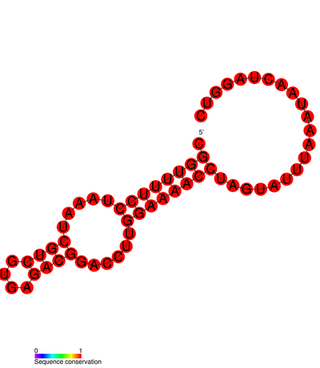Top Qs
Timeline
Chat
Perspective
Crinivirus
Genus of viruses From Wikipedia, the free encyclopedia
Remove ads
Crinivirus, formerly the lettuce infectious yellows virus group, is a genus of viruses, in the family Closteroviridae.[1] They are linear, single-stranded positive sense RNA viruses (and are therefore group IV).[2] There are 14 species in this genus.[1] Diseases associated with this genus include: yellowing and necrosis, particularly affecting the phloem.[1][3]
Examples of species whose entire genomes have been sequenced that are currently classified into the genus include the Sweet potato chlorotic stunt virus (SPCSV) and the Lettuce infectious yellows virus (LIYV).[4][5]
Remove ads
Genetics
The viruses of this genus have segmented, bipartite genomes that add up to 7,500–19,500 nucleotides in length. Their genomes also code for proteins that do not form part of the virion particles as well as structural proteins. The Universal Virus Database describes that their genome sequences near their 3'-ends are capable of hairpin-loop formation and also believe that their 5'-ends may have methylated caps.[5] Each of the viral RNA molecules contains four hair-pin structures and a pseudoknot in the 3'UTR. The pseudoknot is unusual in that it contains a small stem-loop structure inside loop L1.[6] In the related genus Closterovirus, these secondary structures have been found to be important in viral RNA replication.[7]
Remove ads
Structure
Viruses in the genus Crinivirus are non-enveloped, with bipartite filamentous geometries. The diameter is around 10-13 nm, with a length of 700-900 nm. Genomes are linear and bipartite, around 17.6kb in length.[1][3]
Remove ads
Life cycle
Viral replication is cytoplasmic. Entry into the host cell is achieved by penetration into the host cell. Replication follows the positive stranded RNA virus replication model. Positive stranded RNA virus transcription is the method of transcription. The virus exits the host cell by tubule-guided viral movement. Plants serve as the natural host. The virus is transmitted via a vector (bemisia tabaci). Transmission route is mechanical.[1][3]
Taxonomy
The following species are assigned to the genus, listed by scientific name and followed by their common names:[8]
- Crinivirus abutilonis, Abutilon yellows virus
- Crinivirus chelidonii, Tetterwort vein chlorosis virus
- Crinivirus contagichlorosis, Tomato infectious chlorosis virus
- Crinivirus cucurbitae, Cucurbit yellow stunting disorder virus
- Crinivirus diodiae, Diodia vein chlorosis virus
- Crinivirus flavibetae, Bean yellow disorder virus
- Crinivirus flavisolani, Potato yellow vein virus
- Crinivirus ipomeae, Sweet potato chlorotic stunt virus
- Crinivirus lactucachlorosi, Lettuce chlorosis virus
- Crinivirus lactucaflavi, Lettuce infectious yellows virus
- Crinivirus palidofragariae, Strawberry pallidosis-associated virus
- Crinivirus pseudobetae, Beet pseudoyellows virus
- Crinivirus rubi, Blackberry yellow vein-associated virus
- Crinivirus tomatichlorosis, Tomato chlorosis virus
Remove ads
References
External links
Wikiwand - on
Seamless Wikipedia browsing. On steroids.
Remove ads

